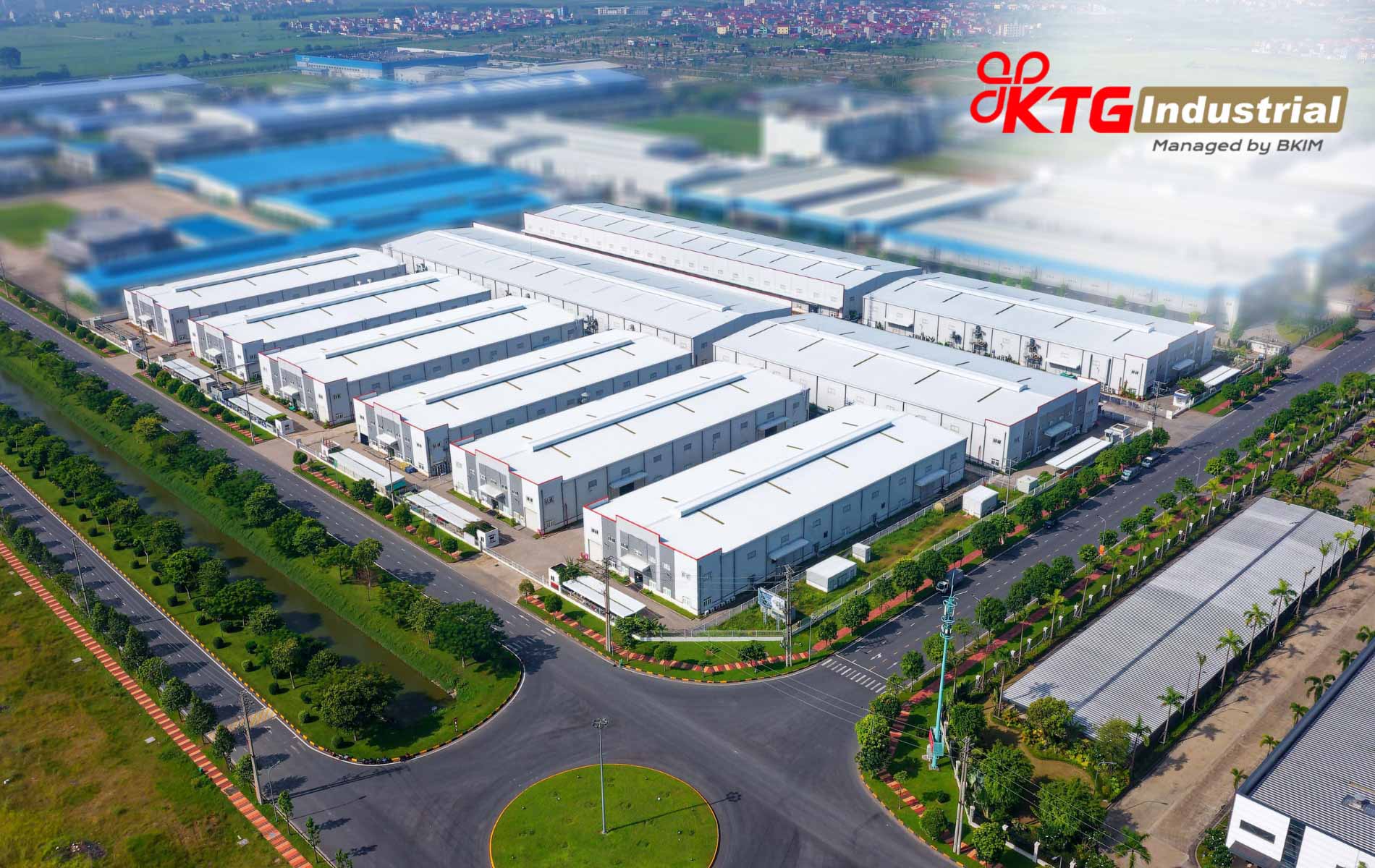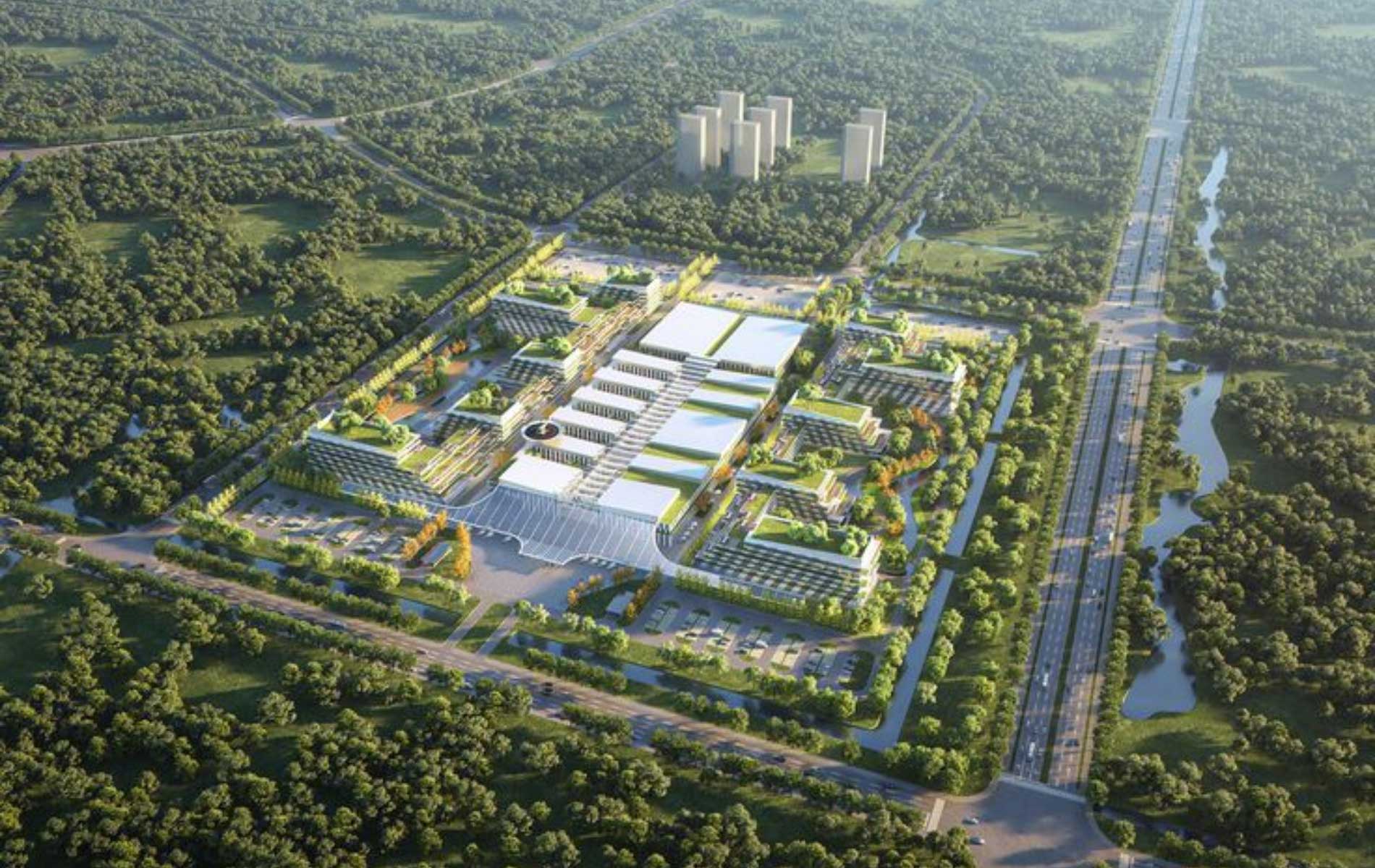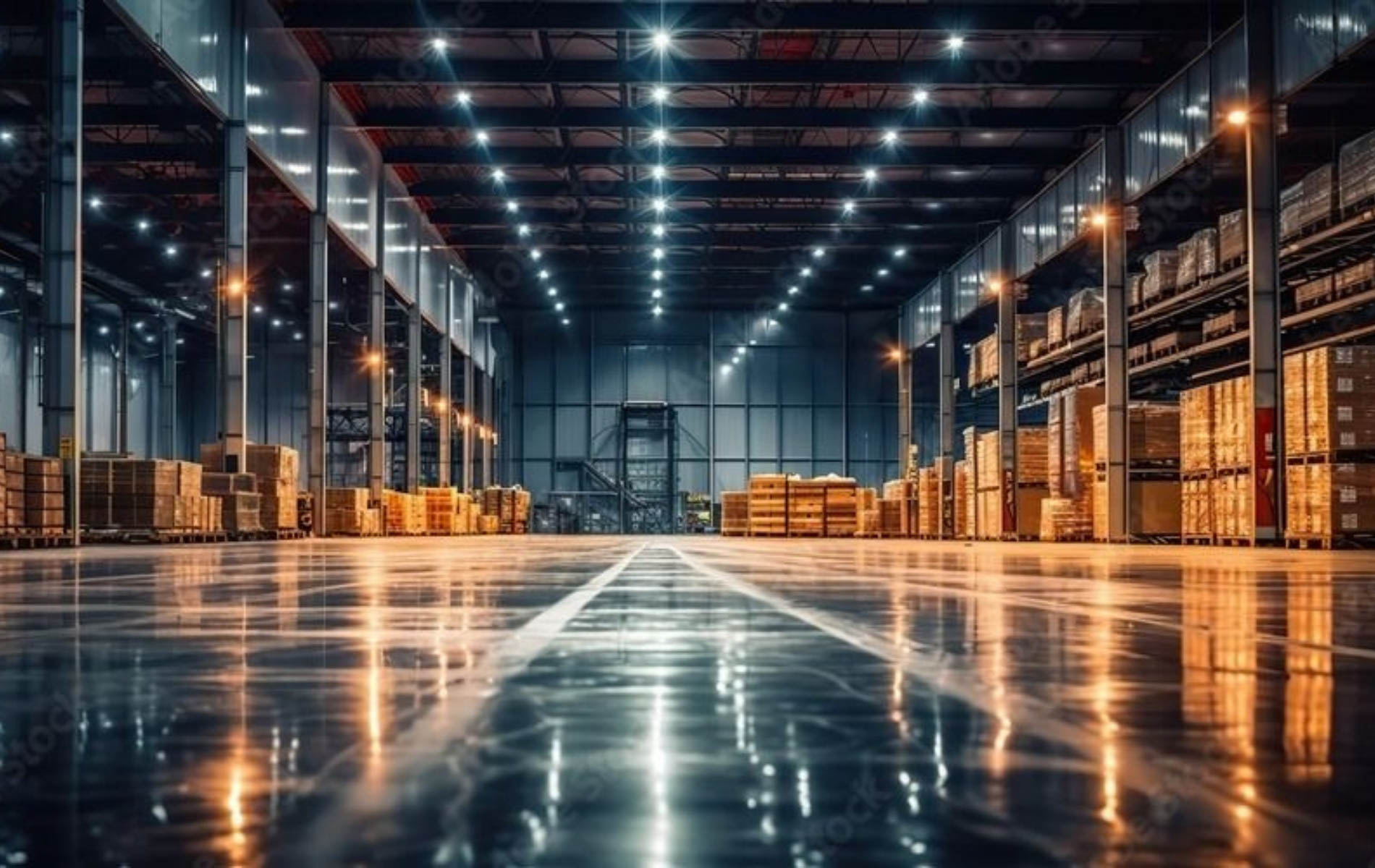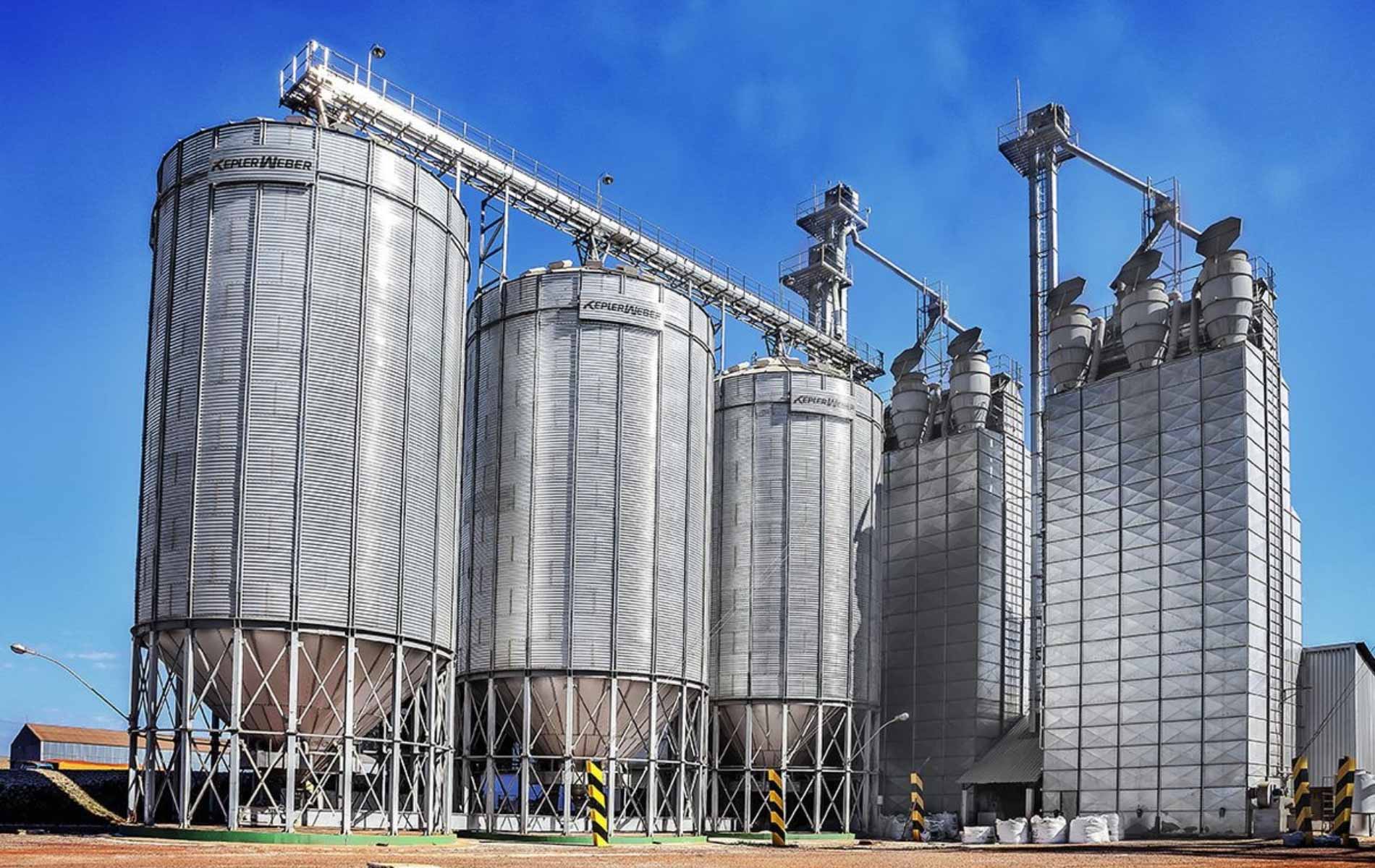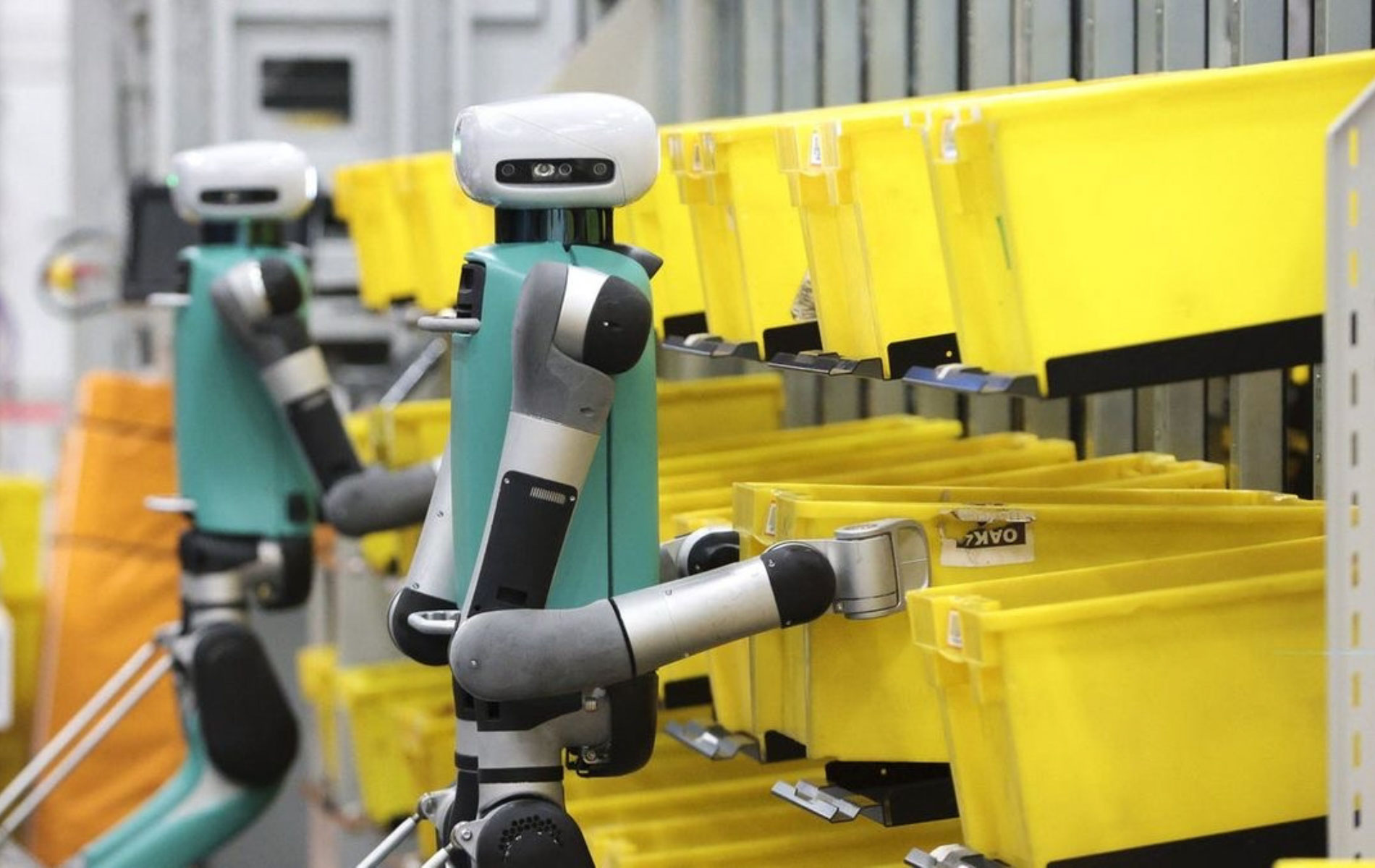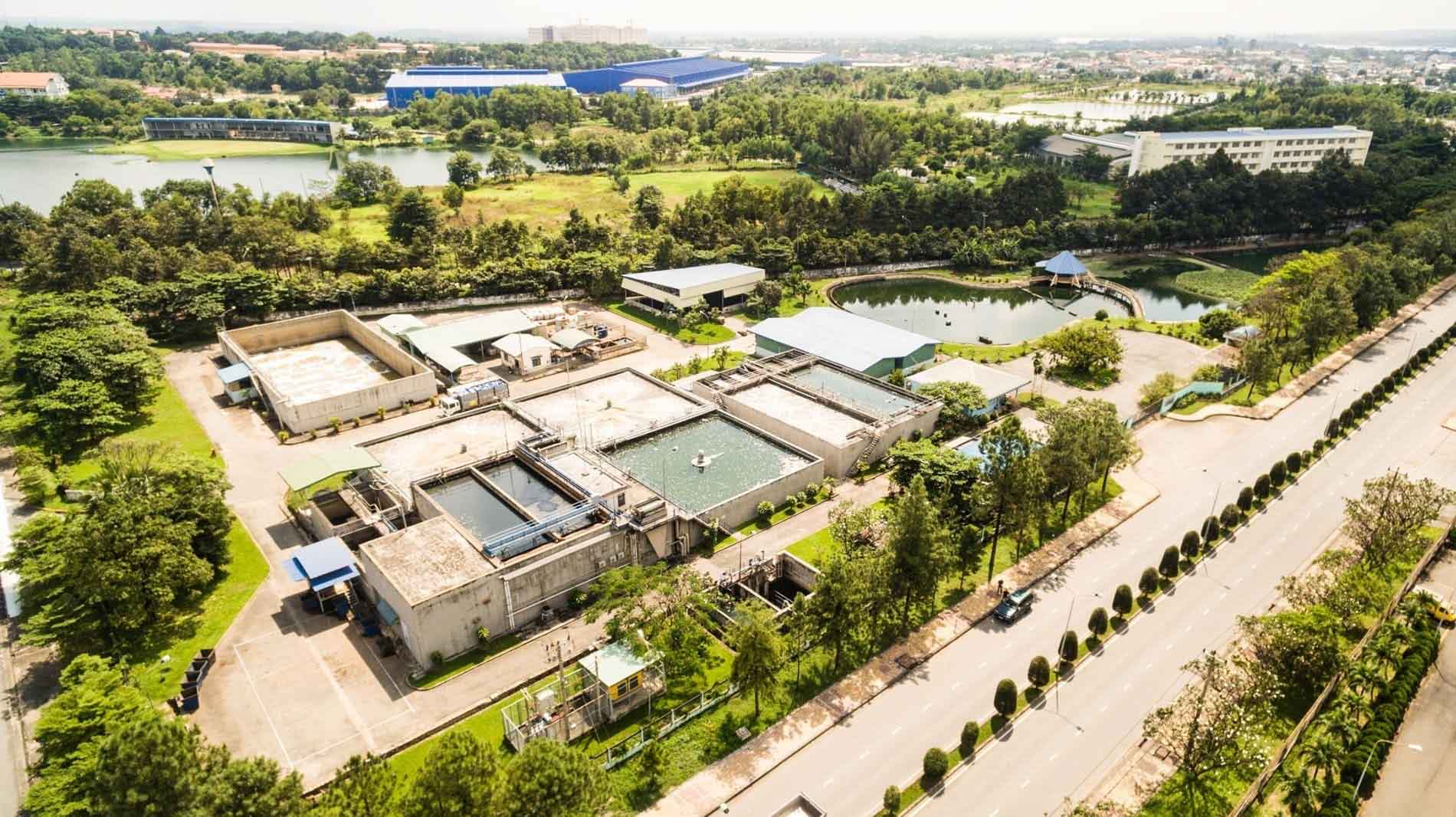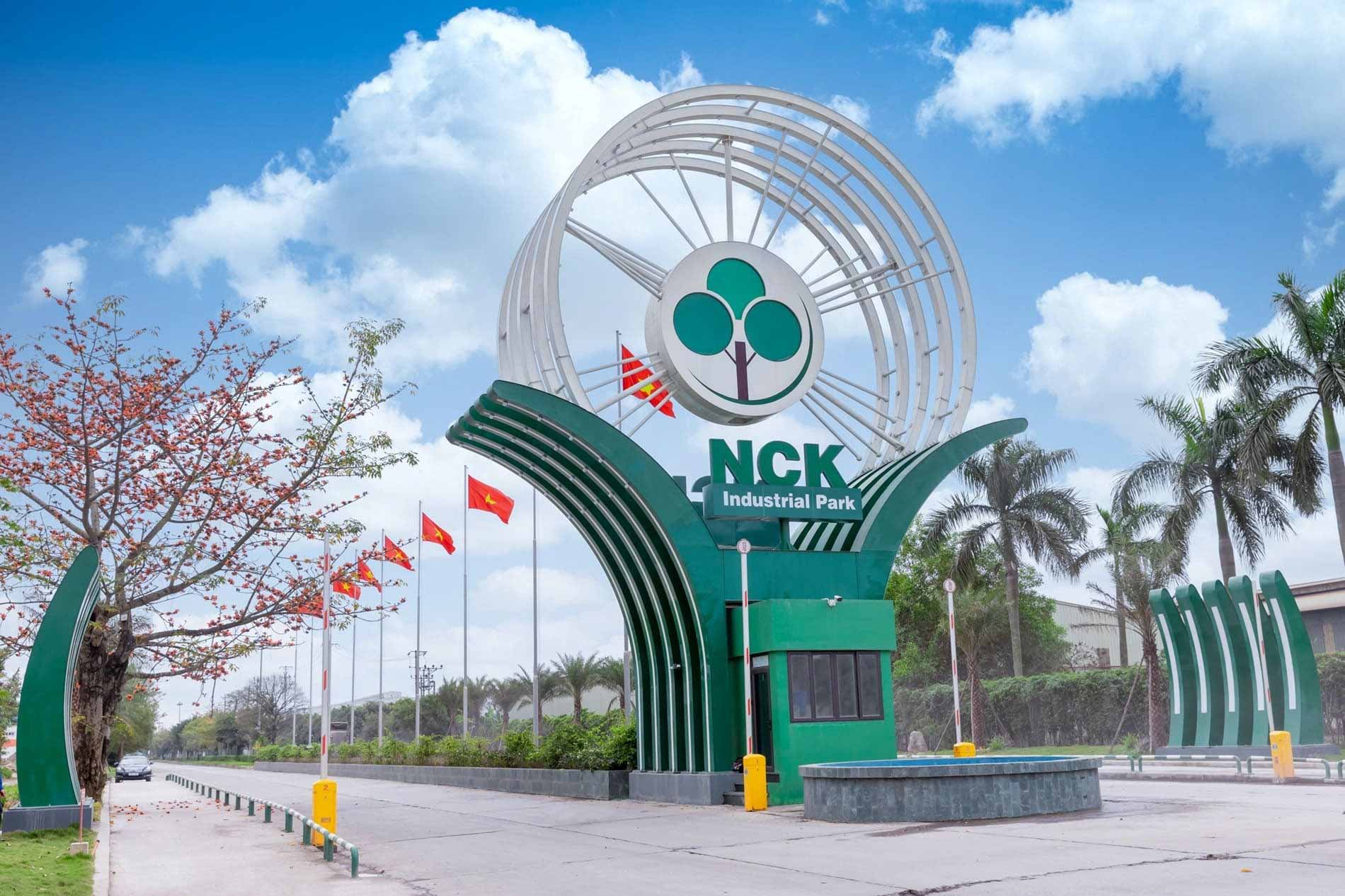Binh Duong, Dong Nai, Bac Ninh, Hai Phong, and Long An are home to the most active industrial zone in Vietnam, forming the core of the country’s Northern and Southern key economic regions. As of 2025, the Vietnam industrial area network is rapidly expanding, with over 220 new parks planned by 2030 to meet rising FDI demand and global supply chain shifts.
This article provides an up-to-date overview of Vietnam’s industrial zone landscape, regional advantages, rental trends, and future development directions.
Keep reading to explore key insights for investors and businesses seeking industrial opportunities in Vietnam.
Overview of industrial zones in Vietnam in 2025
According to the approved development plan for industrial parks by 63 provinces and cities nationwide, Vietnam aims to have a total of 221 new industrial parks by 2030, along with 76 expanded industrial parks and 22 parks with adjusted planning [1].
This plan not only reflects efforts to attract foreign direct investment (FDI) but also demonstrates the direction to expand industrial space to meet the growing production demand amidst the global supply chain shift.
In addition to the expansion in number, Vietnam’s industrial real estate market also shows a significant rental price difference between the North and the South. According to data from VnExpress, the average rental price for industrial land in the North is about 132 USD/m², nearly 30% lower than in the South [2].
In addition to the expansion in number, Vietnam’s industrial real estate market also shows a significant rental price difference between the North and the South. According to data from VnExpress, the average rental price for industrial land in the North is about 132 USD/m², nearly 30% lower than in the South [2].
Developed industrial provinces such as Ho Chi Minh City, Binh Duong, and Dong Nai have significantly higher rental prices due to their advantages in central economic locations and well-developed transportation infrastructure. Meanwhile, the North, with a large land supply and reasonable costs, is becoming a potential choice for foreign companies seeking to expand production with optimized expenses.
Not stopping at scale and rental prices, the current development trend of industrial parks in Vietnam also focuses on sustainability and technology. More and more investors are turning to building green industrial park models that meet international certifications such as LEED, aiming to meet environmental requirements and reduce emissions.
At the same time, in major cities—where land supply is scarce—multi-story factory models are being strongly implemented to optimize the use of space while still ensuring functionality and operational efficiency [3]. This is seen as a strategic direction that helps Vietnam enhance its competitiveness in the region and attract high-value industries.
Industrial zones in Vietnam span the entire country
The system of industrial parks in Vietnam is evenly distributed across the country, forming three main development regions: the North, the Central region, and the South. Each region has its own advantages in terms of geographic location, connectivity infrastructure, and labor resources.
The Northern region
| Area | Province/City |
| Total area | 18.900 ha |
| Occupancy rate | Approximately 82% |
| Northern region | 25 provinces, cities |
| North Key Economic Zone (NKEZ) | Ha Noi, Hai Phong, Bac Ninh, Hai Duong, Hung Yen, Vinh Phuc, Quang Ninh |
| Key industrial zones in the North | Ha Noi, Bac Ninh, Bac Giang, Vinh Phuc, Hai Phong |
It can be said that northern Vietnam is forming a dynamic network of industrial zones, playing a key role in the national industrial map. Among them, Hanoi and Hai Phong have emerged as two prominent development centers, not only in terms of scale but also in infrastructure investment and occupancy rates.
The parallel development of these two cities has created a closely connected industrial region, contributing to the promotion of supply chains and increasing competitiveness for the entire northern area.
Ha Noi City
In the period from 2021 to 2025, Hanoi focuses on developing industries with high technological content and high added value. The city prioritizes the development of fields such as numerical control, automation, robotics, nanotechnology, plasma, laser, and biotechnology. These industries not only contribute to modernizing the local industry but also have strong export potential.
In addition, traditional manufacturing sectors such as automobiles, shipbuilding, food processing, steel, petrochemicals, and software are also identified as key areas in the city’s industrial development strategy.
By 2025, Hanoi will have 70 industrial clusters operating, spread across 17 districts and towns, covering a total area of approximately 1,868 hectares. These industrial clusters play an important role in promoting local economic growth, creating jobs, and improving social welfare.
One of the most prominent industrial zones in Hanoi is Hoa Lac Hi-tech Park. This is the first and largest high-tech park in Vietnam, covering an area of up to 1,586 hectares. The park is planned into several specialized functional areas such as: software development zone, training and research zone, high-tech industrial zone, residential area, and service area.
Hoa Lac Hi-tech Park is currently a hub attracting businesses in the fields of e-commerce, software, and high-tech research and applications, contributing to making Hanoi the technology leader of the country.
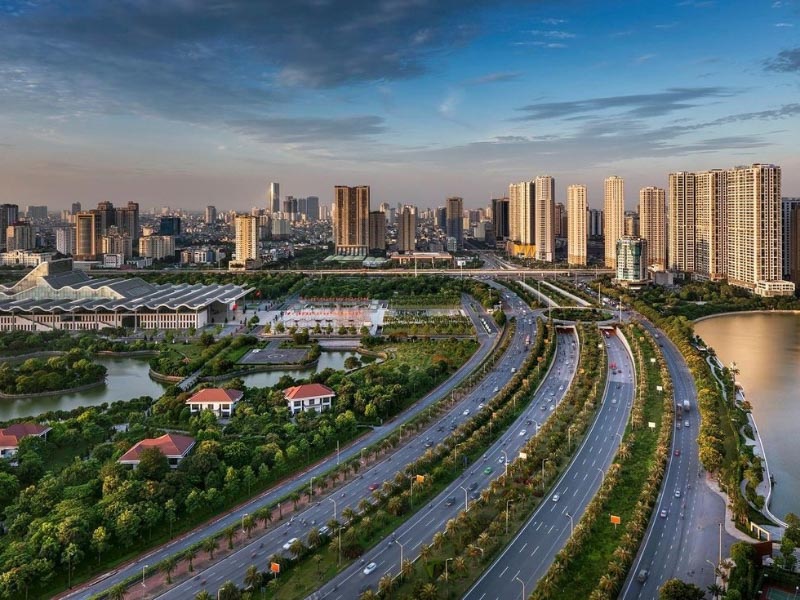
With a vision for sustainable and modern industrial development, Hanoi continues to invest in expanding infrastructure and attracting investment into industrial zones
Hai Phong
In terms of industry, Hai Phong has developed both light and heavy industries strongly. Key sectors include shipbuilding, textiles, cement, paper, steel, and chemicals. These industries provide high export value and create thousands of jobs for the local workforce. Hai Phong is currently trading with over 40 countries and territories worldwide, contributing to the city’s position as a major trade hub in the country.
As of now, Hai Phong has 12 industrial zones, including 8 zones located in the Dinh Vu – Cat Hai Economic Zone and the remaining 4 zones outside the economic zone. Most of the large-scale industrial zones are concentrated in three districts: Hai An, An Duong, and Thuy Nguyen – areas strategically located near the airport, seaport, and key transport routes such as National Road 5A.
One of the notable industrial zones in Hai Phong is Dinh Vu Industrial Park (Deep C Industrial Park). This industrial park is located within the Dinh Vu – Cat Hai Economic Zone and is highly regarded for its modern infrastructure, its proximity to the seaport, and its comprehensive business support ecosystem.
Deep C Industrial Zones attract many foreign investors in sectors such as chemicals, renewable energy, logistics, and food processing, contributing to industrial transformation towards sustainability and high-tech development.
The Central region
| Area | Province/City |
| Total area | 17.600 ha |
| Occupancy rate | Approximately 50% |
| Central region | 19 provinces, cities |
| Central Key Economic Zone (CKEZ) | Thua Thien Hue, Da Nang, Quang Nam, Quang Ngai, Binh Dinh |
| Key industrial zones in the Central | Da Nang, Quang Nam |
Da Nang
As the largest city in Central Vietnam and one of the country’s key seaports, Da Nang is positioning itself to develop core industries such as mechanical engineering, electronics, chemicals, and shipbuilding. In particular, the shipbuilding sector is receiving increasing attention amid rising demand for naval and coast guard vessels.
Currently, Da Nang has six concentrated industrial zones: Hoa Khanh, Da Nang, Lien Chieu, Hoa Khanh Expansion, Hoa Cam, and Da Nang Fisheries Service, with a total area of approximately 1,066.52 hectares.
Among them, Lien Chieu Industrial Zone stands out with a planned area of up to 1,200 hectares. It is zoned to attract high-tech industries such as electronics, precision engineering, and supporting industries. Its strategic location in Lien Chieu District, combined with a focus on sustainable development, makes this industrial zone an attractive destination for both domestic and foreign investors.
Quang Nam – Da Nang economic zone
Located within the Central Key Economic Region, Quang Nam plays a strategic role in socio-economic development and in ensuring national defense and security along the Central Coast and the Central Highlands.
The province focuses on developing core industries such as food processing, textiles and garments, construction materials, paper, and forestry-based products. In the near future, sectors such as oil and gas, shipbuilding, logistics, and high technology are expected to grow significantly, contributing to a modern and sustainable industrial landscape for the region.
Quang Nam currently hosts several industrial zones that fall within the Quang Nam – Da Nang economic zone. Among them, Dien Nam – Dien Ngoc Industrial Zone is a key highlight. This industrial zone is located in Dien Ban town, covering the wards of Dien Nam and Dien Ngoc, with a total area of approximately 169 hectares.
It is a modern planned industrial zone, strategically located near Da Nang city and the seaport, making it suitable for attracting industries such as textiles and garments, component manufacturing, food processing, and supporting industries.
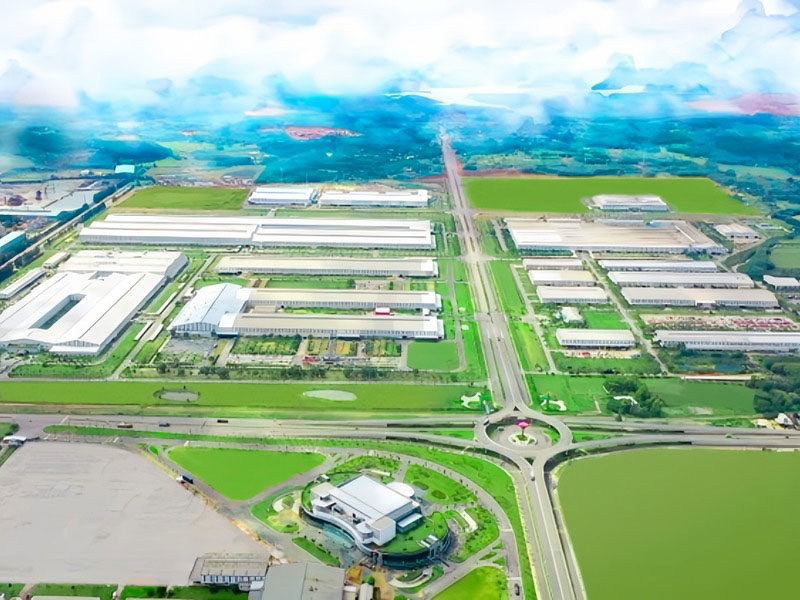
With a clear orientation toward attracting investment in clean technology and advanced processing industries, Quang Nam is increasingly positioning itself as a dynamic industrial hub in the region
The South region
| Area | Province/City |
| Total area | 44.700 ha |
| Occupancy rate | Approximately 77% |
| Central region | 19 provinces, cities |
| South Key Economic Zone (SKEZ) | Ho Chi Minh City, Binh Duong, Dong Nai, Long An, Can Tho, Ba Ria – Vung Tau, Binh Phuoc, Tay Ninh, Tien Giang |
| Key industrial zones in the South | Ho Chi Minh City, Dong Nai, Binh Duong, Can Tho |
Ho Chi Minh City
Known as the country’s “economic locomotive,” Ho Chi Minh City is not only a dynamic financial and commercial center but also a strategic destination for a range of high-priority industries.
With the advantage of its location along the Saigon River and continuously expanding infrastructure, the city has strongly attracted both domestic and international investors to develop industrial production.
The city focuses on developing several core industries such as textiles and garments, electronics, food processing, and chemicals. The textile and garment sector here is regarded as one of the largest manufacturing hubs in the country.
At the same time, the electronics and food processing industries are experiencing strong growth, fueled by the presence of major multinational corporations and large domestic enterprises.
Ho Chi Minh City currently hosts several large-scale industrial zones, including:
- Hiep Phuoc Industrial Park (Nha Be District): Covering an area of 1,686 hectares, this is the largest industrial zone in the city. It enjoys a favorable location near the port and is equipped with modern infrastructure.
- Saigon Hi-Tech Park: Located about 15 km from the city center, the park spans 326 hectares (95% of which is already in use) and is being expanded to 913 hectares. It is a key hub for high-tech projects, attracting major corporations such as Intel, Samsung, and others.
- Tan Tao Industrial Park (Binh Tan District): With an area of 400 hectares, this park is home to more than 200 enterprises operating across diverse manufacturing sectors.
Dong Nai
If southern Vietnam is viewed as a massive economic engine, then Dong Nai is one of its most powerful gears—operating quietly, yet efficiently. With its strategic location adjacent to Ho Chi Minh City and within the Southern Key Economic Region, Dong Nai serves not only as a critical logistics hub but also as a magnet for high-tech industrial investment.
The province focuses on developing core industries such as electronic component manufacturing, textiles and garments, and high-tech industrial products. Notably, sectors with high technical content are taking up an increasingly larger share, reflecting a clear orientation toward sustainable development and the enhancement of industrial value chains.
Dong Nai is home to several major industrial zones, among which Amata Industrial Park (Bien Hoa City) stands out. Covering 700 hectares and housing over 200 enterprises, it is one of the most modern industrial parks in the province. The park is known for its well-developed infrastructure and strong ability to attract foreign investment, particularly in the electronics and high-tech sectors.
Binh Duong
Binh Duong, one of the key provinces in the Southeast region, continues to stand out with its rapid and sustainable industrial development. Located at the gateway of Ho Chi Minh City, Binh Duong benefits from seamless connectivity to major economic centers and offers an ideal location for both domestic and international enterprises to expand production—especially in sectors such as textiles, footwear, electronics, food processing, and furniture manufacturing.
The province is home to numerous large-scale industrial parks, with a total area spanning several thousand hectares. Among them, the Vietnam – Singapore Industrial Park (VSIP) is a prominent highlight, with three locations across Thu Dau Mot, Bac Tan Uyen, and Ben Cat.
VSIP has attracted hundreds of major enterprises from countries such as Singapore, Japan, and South Korea, with a wide range of industrial production projects—from electronics to food processing. The park stands out not only for its scale but also for its modern infrastructure and favorable business environment tailored to high-tech and export-oriented manufacturers.
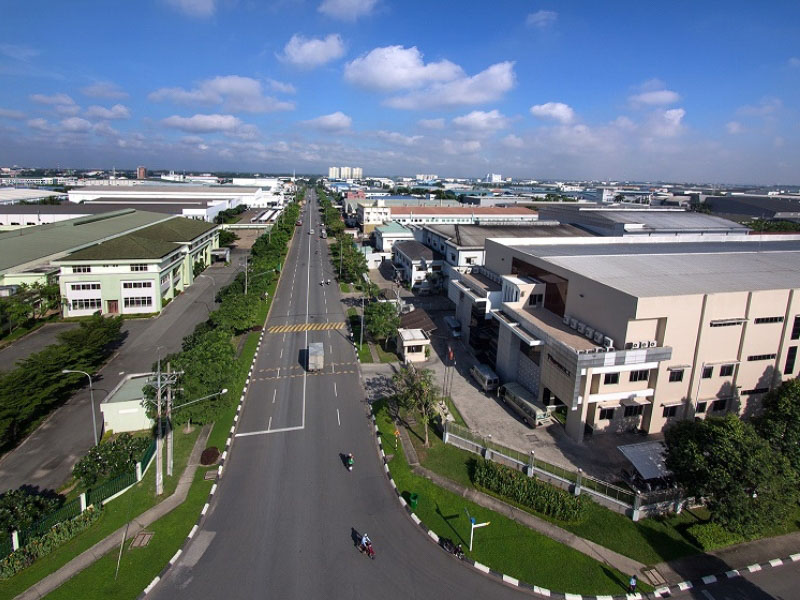
VSIP industrial park – Binh Duong
In addition to VSIP, the Binh Duong Industrial Park itself plays a pivotal role as a hub for Vietnam’s export furniture and footwear industries. With a dynamic business environment and strong industrial growth, Binh Duong is steadily reinforcing its position as one of the most promising industrial hotspots in southern Vietnam.
Can Tho
Can Tho is not only the economic and cultural center of the Southwest but also a rising hub in the region’s industrial development. Located on the banks of the Hau River, Can Tho offers a combination of strategic advantages, from abundant agricultural resources to growing sectors in processing and consumer goods manufacturing.
Key industries in Can Tho include textiles, footwear, food processing, and consumer goods. Among the city’s industrial zones, Tra Noc 1 and 2 Industrial Parks stand out—not only for their extensive land area but also for their pioneering eco-industrial park model.
These parks have enabled significant resource savings, including 19,000 tons of oil, 30,000 tons of coal, 600,000 cubic meters of water, and a reduction of 130,000 tons of CO2 emissions. This approach not only improves production efficiency but also contributes to environmental protection, positioning Can Tho as a leading example of green industrial development in Vietnam.
Opportunities and challenges for industrial zones in Vietnam in 2025
Opportunities for industrial zones in Vietnam
Vietnam holds a strategic geographic position, with a long coastline adjacent to major international maritime routes and proximity to China, one of Asia’s largest manufacturing hubs.
This allows industrial zones in Vietnam to efficiently connect with markets such as Japan, South Korea, and ASEAN, while also enabling convenient import-export operations through major ports like Hai Phong, Da Nang, and Cai Mep – Thi Vai, contributing to lower logistics costs.
In addition, labor costs in Vietnam remain competitive compared to China, Thailand, or Malaysia. The country also benefits from a young, adaptable workforce, well-suited for labor-intensive industries such as textiles, electronics, and assembly.
Moreover, tax incentive policies play a key role in encouraging investment in industrial zones. Investors in Vietnam’s industrial parks may be eligible for incentives such as corporate income tax exemptions for the first 2–4 years, a 50% tax reduction in subsequent years, import tax exemptions on machinery, and reductions or exemptions on land lease payments depending on the priority region.
These policies not only help mitigate initial financial risks but also serve as long-term drivers for foreign investors looking to expand manufacturing operations in Vietnam.
Challenges for industrial zones in Vietnam in 2025
In 2025, industrial zones in Vietnam face significant challenges as the United States imposes import tariffs of up to 46% on goods originating from Vietnam. This high tariff rate directly impacts key export sectors such as textiles, electronics, and agricultural products, increasing costs and reducing competitiveness.
The situation has also raised concerns within the FDI community, threatening the occupancy rates of industrial parks. In response to this pressure, the government is intensifying dialogue and adjusting policies, while enterprises need to enhance their capacity to comply with international standards.
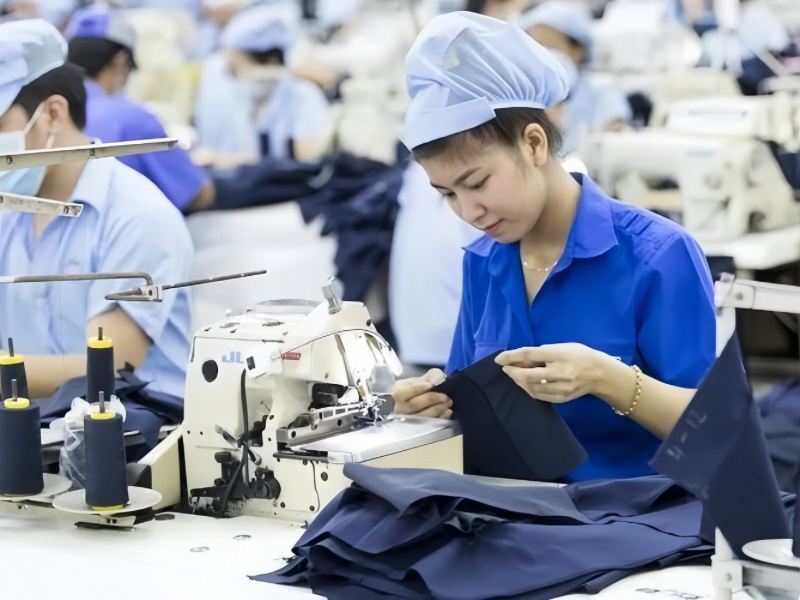
2025 marks a pivotal moment for industrial zones in Vietnam to demonstrate their adaptability and transformation capabilities
Conclusion
Overall, industrial zones in Vietnam are entering a critical transition phase in 2025. Their development will depend on the ability to adapt to changing market conditions and the domestic and international investment environment. Although challenges are emerging, opportunities remain abundant. Industrial zones will continue to play a vital role in Vietnam’s economy, contributing to sustainable growth and development in the future.
References
[1] Ha Anh (2025). 221 khu cong nghiep duoc quy hoach phat trien ben vung den 2030. Cong thong tin dien tu Dang Cong San Viet Nam. Retrieved May 2, 2025, from https://dangcongsan.org.vn/noidung/tintuc/lists/vietnamkynguyenvuonminh/view_detail.aspx?itemid=121
[2] Ngoc Diem (2024). Gia thue dat cong nghiep mien Bac thap hon phia Nam gan 30%. Bao VnExpress. Retrieved May 2, 2025, from https://vnexpress.net/gia-thue-dat-cong-nghiep-mien-bac-thap-hon-phia-nam-gan-30-4827007.html
[3] David Jackson (2025). Xu huong phat trien khu cong nghiep the he moi. Bao Dau tu. Retrieved May 2, 2025, from https://baodautu.vn/xu-huong-phat-trien-khu-cong-nghiep-the-he-moi-d268402.html

